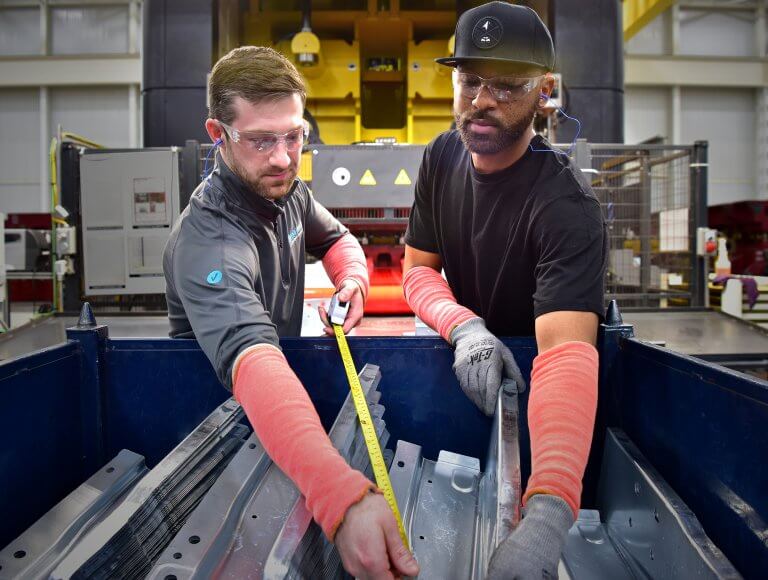When conducting an ergonomics assessment, collecting accurate and adequate data from a workstation is critical. Data collection consists of gathering measurements relating to the tasks being performed. These measurements will support in developing an effective ergonomics-driven improvement plan to reduce musculoskeletal disorder (MSD) risk. Knowing what data to collect prior to conducting your assessment can prepare you for an accurate ergonomics assessment.
But exactly what type of data should be collected? Here are some key measurements when collecting data for an ergonomic assessment.
Surface Heights
Surface heights of the workstation area can include the height of worktable, any shelving units, handles on the cart, display monitors, etc. To measure the surface height of a workstation, place the beginning of the tape measure at the standing surface (the ground), extend the tape measure until you reach the top of the surface, and record the measurements.
Hand Working Height
Not to be confused with surface height; this is the vertical height at which the hands are conducting a task. To measure the hand working height of an operator, place the beginning of the tape measure at the standing surface (again, the ground), and extend the tape measure up until you reach the center grip of the hand, and then record the measurement.
Horizontal Reaches
This is the distance at which the arm extends to complete a task. A reach takes place while the arm is extended in front of the body or towards the side of the body. To measure the reach of an operator, hold tape measure parallel to the floor, and measure from the edge of the workstation surface to the hand grasping point. The hand grasping point is where your hand is performing the task.
Forces
Forces refer to any external load that the operator handles (e.g., parts, tools, equipment), or any pushing or pulling applied when performing a task. There are specific tools to use when measuring force based on the type of force used during a task. Selecting the appropriate tool is critical for accurate measurements. Take a look below at the type of tasks along with the suggested force tool gauge to use.
- Pinch Grip: Pinch grip dynamometer
- Finger Press: Force gauge
- Power Grip: Hand dynamometer
- Product/Tool Weight: Scale
- Pushing: Force gauge
- Pulling: Force gauge
For more information on using the different force tool gauges, visit the VelocityEHS YouTube channel and watch our video on Choosing a Force Gauge.
